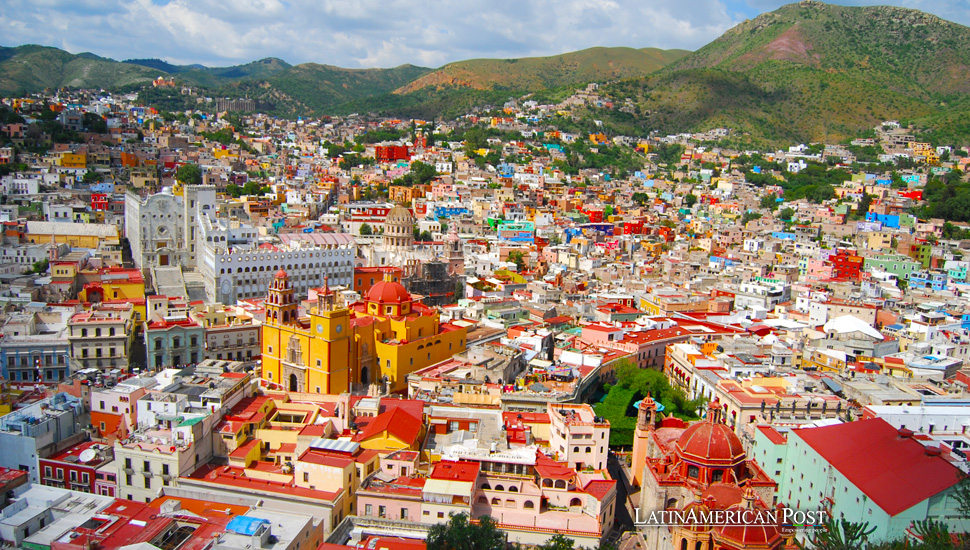Visit these 5 world heritage towns in Latin America

Latin America beckons travelers with its diverse cultural tapestry and breathtaking landscapes, offering a plethora of enchanting villages that promise unforgettable experiences.
LatinAmerican Post
Listen to this article
Leer en español: Visita estos 5 pueblos patrimonio de la humanidad en América Latina
In the heart of Latin America, amidst its rich cultural tapestry and diverse landscapes, lie hidden gems waiting to be discovered. UNESCO’s World Heritage Center has bestowed its prestigious accolade upon numerous towns and cities across the region, celebrating their unique blend of history, culture, and natural beauty. From the cobbled streets of Colombia to the vibrant hues of Brazil, let’s embark on a journey to uncover five captivating heritage villages that embody the spirit of Latin America.
1. Historic Center of Santa Cruz de Mompox – Colombia
Nestled along the banks of the majestic Magdalena River, Santa Cruz de Mompox exudes colonial charm steeped in centuries of history. This picturesque city, with its impeccably preserved architecture and labyrinthine streets, is a living testament to Colombia’s colonial past. Immortalized in the works of literary maestro Gabriel García Márquez, Mompox mesmerizes visitors with its magical realism and timeless allure.
The cobblestone streets of Mompox are lined with colonial-era buildings, their facades adorned with intricate wrought-iron balconies and colorful bougainvillea. As visitors wander through the town’s historic center, they encounter landmarks such as the Church of Santa Bárbara and the Plaza de la Concepción, each offering a glimpse into Mompox’s rich cultural heritage.
Read also Love is in the air! 5 romantic destinations in Latin America
Beyond its architectural splendor, Mompox boasts a vibrant cultural scene, with traditional music, dance, and cuisine providing a window into the region’s Afro-Colombian roots. Visitors can explore local workshops where artisans craft intricate filigree jewelry and vibrant textiles or sample delicacies such as bolo de mazorca and arepa de huevo at bustling market stalls.
2. Historic Center San Salvador de Bahia – Brazil
A vibrant tapestry of color and culture awaits in the historic center of San Salvador de Bahia, Brazil’s pulsating heart. Recognized as a UNESCO Cultural Heritage site since 1985, this bustling city captivates with its colonial-era architecture and Afro-Brazilian heritage. From the cobblestone streets to the lively markets, Bahia beckons travelers to immerse themselves in its rich tapestry of traditions and rhythms.
The historic center of San Salvador de Bahia is a kaleidoscope of architectural styles, with ornate churches, pastel-colored mansions, and bustling plazas lining its narrow streets. At the heart of the neighborhood lies the Pelourinho, a UNESCO-listed square renowned for its vibrant street life and colonial-era charm.
3. Cienfuegos Urban Historic Center – Cuba
In the heart of Cuba lies the enchanting city of Cienfuegos, where French elegance meets Caribbean charm. Steeped in 19th-century grandeur, this UNESCO-listed treasure boasts a rich architectural heritage and a thriving commercial culture. From its majestic boulevards to its quaint plazas, Cienfuegos invites visitors to step back in time and experience the splendor of Cuba’s colonial past.
The wealth of Cienfuegos lies not only in its architectural beauty but also in its vibrant cultural scene. Visitors can explore the city’s museums and galleries, which showcase the work of local artists and artisans, or sample traditional Cuban cuisine at charming restaurants and cafes.
Read also: The 5 best tourist destinations in Argentina
4. Apple and Jesuit Stays of Córdoba – Argentina
Amidst the picturesque streets of Córdoba, Argentina, lies a hidden gem of religious and cultural significance: the Jesuit apple. Comprising five historic buildings that once housed the Society of Jesus, this UNESCO World Heritage site is a testament to Argentina’s colonial legacy. With its rich history and architectural splendor, the Jesuit apple offers a glimpse into the country’s spiritual and cultural heritage.
The Jesuit apple is a testament to the ingenuity and vision of Argentina’s colonial architects, who combined European and indigenous influences to create a unique architectural style. Visitors can explore the Apple’s historic buildings, which include churches, abbeys, and residences, and learn about the role of the Jesuit order in shaping Argentina’s cultural identity.
5. Historic City of Guanajuato and Adjacent Mines – Mexico
Nestled amid the rugged landscapes of central Mexico, the historic city of Guanajuato enchants visitors with its timeless beauty and rich mining heritage. From its labyrinthine alleyways to its opulent baroque architecture, Guanajuato captivates with its storied past and vibrant culture. As visitors explore its winding streets and underground mines, they journey through Mexico’s fascinating history and enduring legacy.
Guanajuato’s rich cultural heritage is evident in its historic architecture, which reflects Spanish colonial, indigenous, and baroque influences. Visitors can explore the city’s iconic landmarks, such as the neoclassical Teatro Juárez and the stunning Basilica of Our Lady of Guanajuato, or wander through its charming plazas and gardens.
In the tapestry of Latin America’s heritage villages, each town and city tells a unique story, weaving together the threads of history, culture, and tradition. From Colombia to Brazil, Cuba to Argentina, and Mexico to beyond, these UNESCO treasures invite travelers to embark on a journey of discovery, forging unforgettable memories amidst the timeless charm of the region.





